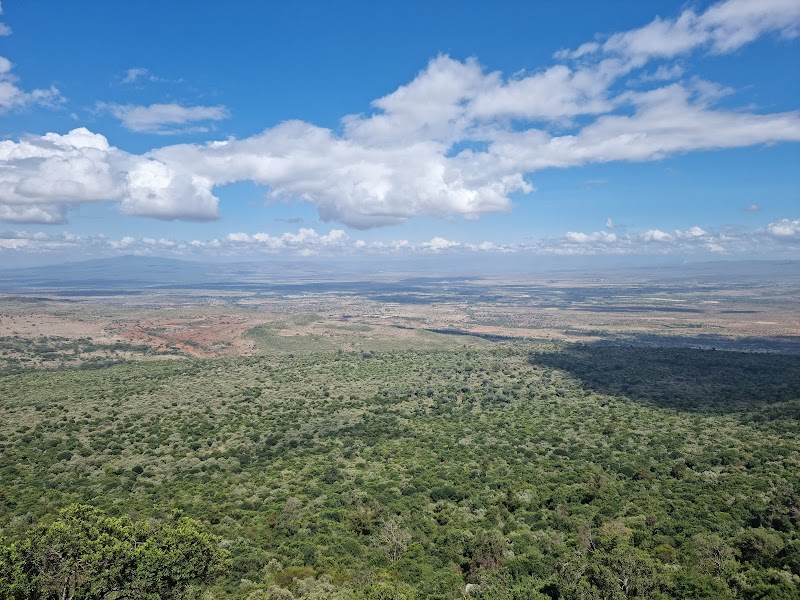Tracking Giants on Foot: A Guided Safari Walk in Nairobi National Park to Spot the Big Five
Experience the thrill of tracking Africa’s Big Five on foot within Nairobi National Park, a rare wilderness just minutes from Kenya’s capital. This guided safari walk offers an intimate connection to wildlife, blending adventure with vital conservation insights, perfect for both casual explorers and serious adventurers.
Start Early for Optimal Wildlife Sightings
Wildlife is most active during the cooler early morning hours, improving your chances to see the Big Five before midday heat sets in.
Wear Sturdy Footwear
Uneven dirt trails and occasional rocky patches require breathable hiking boots with good ankle support to avoid injury.
Stay Hydrated
Carry at least 1.5 liters of water per person; the Kenyan sun can drain your energy quickly and the park offers no refill points on the trail.
Keep Quiet and Follow Your Guide
Wild animals notice noise and sudden movements. Staying silent and moving deliberately keeps you safer and improves wildlife encounters.
Tracking Giants on Foot: A Guided Safari Walk in Nairobi National Park to Spot the Big Five
Stepping into Nairobi National Park for a guided safari walk is an invitation to encounter Africa’s most iconic wildlife up close, framed by the city’s distant skyline. Covering approximately 5 to 7 kilometers on uneven terrain with gentle elevation shifts, this trail moves through open grasslands and acacia-dotted clearings where lions lounge and elephants wander. The earth beneath your boots sometimes crunches dry, other times softens with recently fallen leaf litter, as the trees lean over the paths, their branches daring you to tread carefully.
Early mornings are best; the air hums with anticipation as birds call out and the wind stirs the tall grasses like a quiet warning. Your guide leads steadily, eyes sharp for movement — a rhino's slow, deliberate silhouette, a buffalo herd's shifting mass, elusive leopards cloaked in shadow. The interaction here is respectful, a dance with creatures fiercely themselves, powerful and untamed.
The walk is physically moderate: uneven ground demands good footing and alertness, while the subtle climbs test endurance without overwhelming. Temperatures range from cool dawn chills to midday warmth, and hydration is critical. Wear sturdy, breathable boots and carry water in easy reach.
Practical preparation enhances the experience. Start before sunrise to catch the golden light and active animals. Keep your camera handy but your voice low; the environment respects silence. Safari walks are limited in group size to avoid disturbing animal behavior, making the adventure personal and immersive rather than crowded.
Beyond spotting the Big Five—lion, leopard, elephant, rhino, and buffalo—you gain insight into the ecosystem that keeps them thriving amid an urban backdrop. Your guide shares knowledge about native plants, tracks, and conservation efforts, connecting every rustle and scent to a living story.
In sum, this guided safari walk isn’t just a hike. It’s a measured, thrilling engagement with Nairobi National Park’s wild heart—challenging yet accessible, exhilarating yet grounded, an opportunity to move alongside giants and listen to the land’s quiet roar.
Nearby Trips
All Adventures
Boat Charters
Water Activities
Adventures near Nairobi
Discover the unique and memorable adventures that make Nairobi special.
Frequently Asked Questions
How close can you safely get to the Big Five on a guided safari walk?
Guides keep a respectful distance, typically 20 to 50 meters depending on animal behavior and species, prioritizing safety for both visitors and wildlife.
Are the safari walks suitable for children or inexperienced hikers?
Walks are moderate and can accommodate teenagers and fit children with supervision, but very young children or those with mobility issues may find the terrain challenging.
What wildlife can I expect to see besides the Big Five?
You’ll encounter giraffes, zebras, warthogs, various bird species, and smaller predators like hyenas and jackals, enriching the experience with biodiversity.
Is it safe to do the safari walk alone?
No. Nairobi National Park mandates guided walks due to the presence of large and dangerous wildlife, ensuring your safety and their protection.
What should I do if I encounter a wild animal up close on the trail?
Remain calm, avoid sudden movements or loud noises, and follow your guide’s instructions carefully to safely exit or observe at a distance.
Are there restroom facilities during the safari walk?
Facilities are limited near the park entrance; it’s advised to use them beforehand as the trail itself has no built restroom stops.
Recommended Gear
Hiking Boots
Provides firm support on mixed trail surfaces and protects feet from thorns and uneven ground.
Lightweight Long-Sleeve Shirt
Protects against sunburn and insect bites while breathable enough for warm weather.
Water Bottle or Hydration Pack
Ensures adequate hydration to maintain energy and focus throughout the hike.
Binoculars
Helpful for spotting distant animals without disturbing their natural behavior.
Local Insights
Hidden Gems
- "Walk east towards the bending creek for quieter wildlife viewing away from main routes."
- "The viewpoint near the Ivory Burning Site offers panoramic views of Nairobi’s skyline against the natural park landscape."
Wildlife
- "Watch for the rare black rhino, a critically endangered species carefully monitored in the park."
- "Early risers might spot nocturnal species like civets and genet still retreating at dawn."
History
"Nairobi National Park, established in 1946, is the world’s only protected park within a capital city, pioneering coexistence between urban development and wildlife conservation."

